Flash Points
- Washington signals a “framework” path before the leaders meet in South Korea
- Agenda spans tariffs, rare earths, fentanyl controls, and farm buys
- Markets and allies read pre-meeting posture as leverage, not concession
Inside the Room
Ahead of the South Korea sit-down, Washington has moved first: packaging tariffs, critical-minerals access, and enforcement items into a single conversation rather than siloed files. That “stacked” approach forces Beijing to price trade relief alongside supply-chain guarantees and fentanyl policing, narrowing room for side deals. U.S. officials have previewed enough contours—in Kuala Lumpur and Tokyo stops—that Beijing arrives to a table already partly set.
Signal Value
The message to investors and allies is straightforward: talks will be anchored on U.S. terms, with relief contingent on measurable changes. By advertising linkage—tariffs for minerals for agriculture—Washington increases the cost of symbolic gestures and rewards verifiable moves. Even the choreography (finance + trade principals huddling before the leaders) is designed to harden a baseline so the summit cannot drift into vague communiqués.
Downstream Power Effects
If the “framework first” posture holds, three knock-ons follow. First, it re-establishes bargaining power eroded by piecemeal truces—concessions now clear a higher bar. Second, it strengthens allied coordination: Tokyo and Seoul can map minerals and tech curbs to any tariff phases, reducing leakage. Third, it stabilizes corporate planning by tying tariff relief to concrete milestones, not open-ended promises. Net result: leverage up front, headlines later.
Implications
A pre-wired framework is less about a splashy signing and more about dictating the structure of what can be signed. That favors the U.S.: specific deliverables (ag purchases, fentanyl enforcement, narrow tech guardrails, rare-earth supply continuity) can be sequenced to tariff steps with snap-back clauses. Even if Thursday ends without a ribbon-cutting, the baseline hardens—Beijing has to move through a U.S.-designed gate to claim market-moving “progress.”


